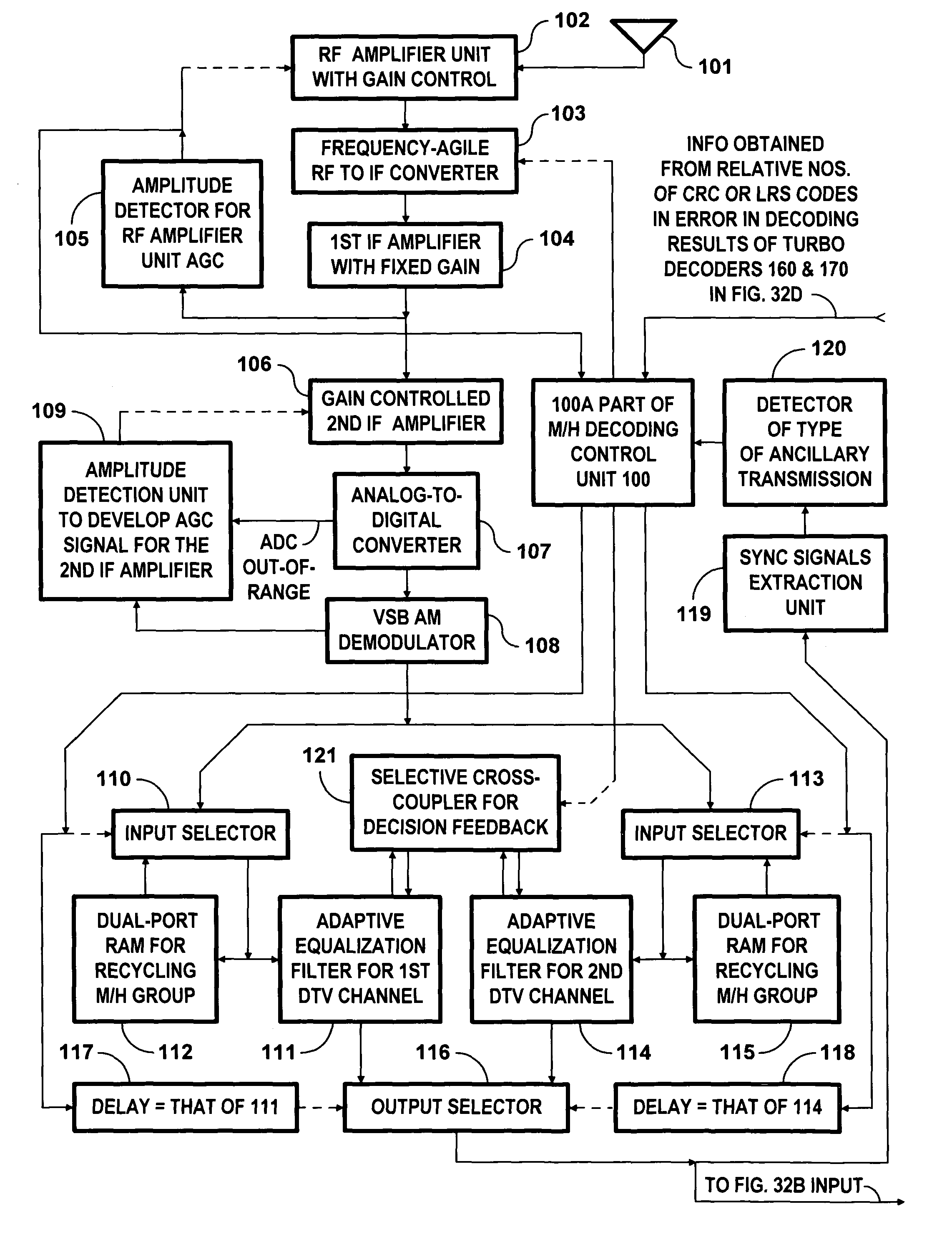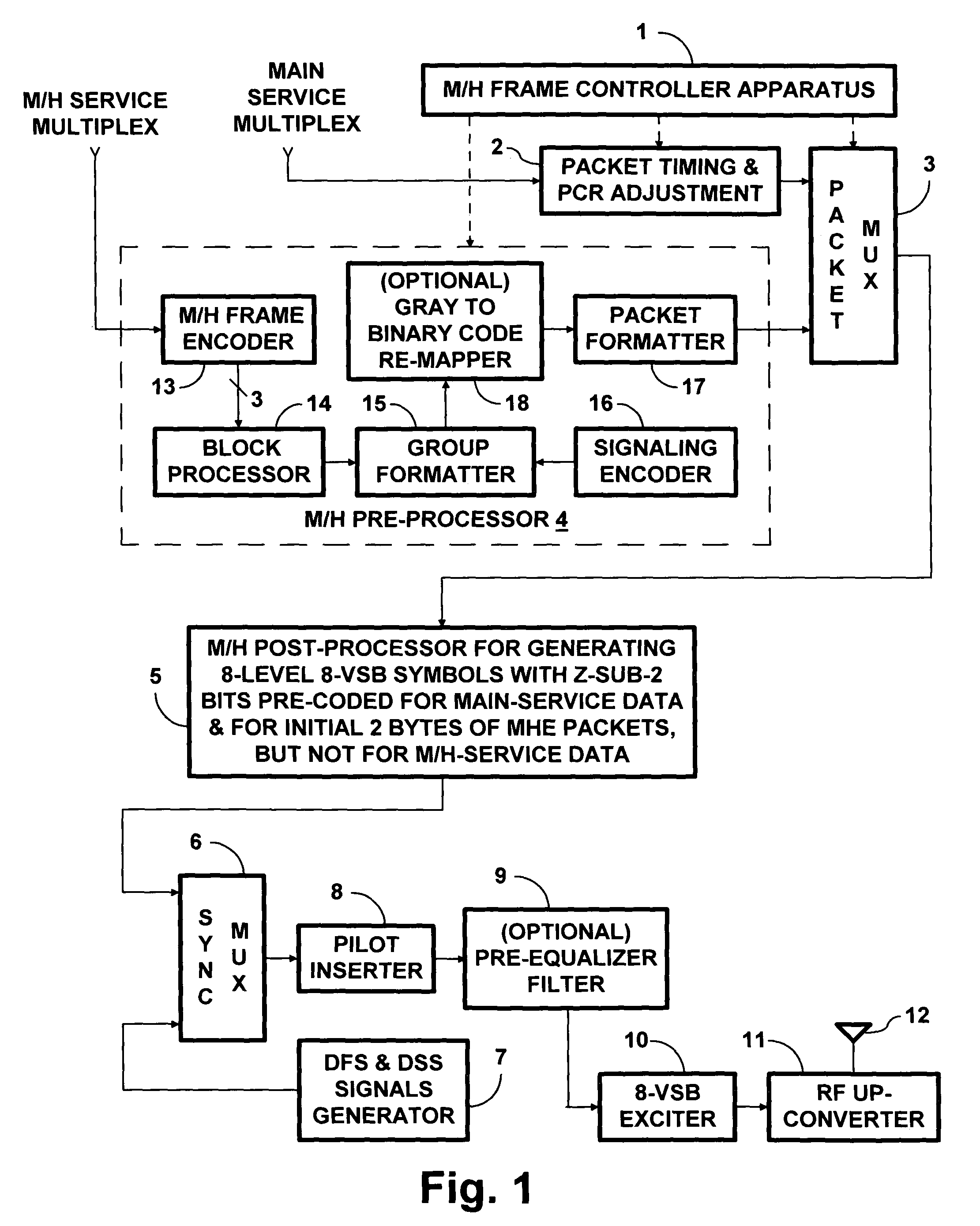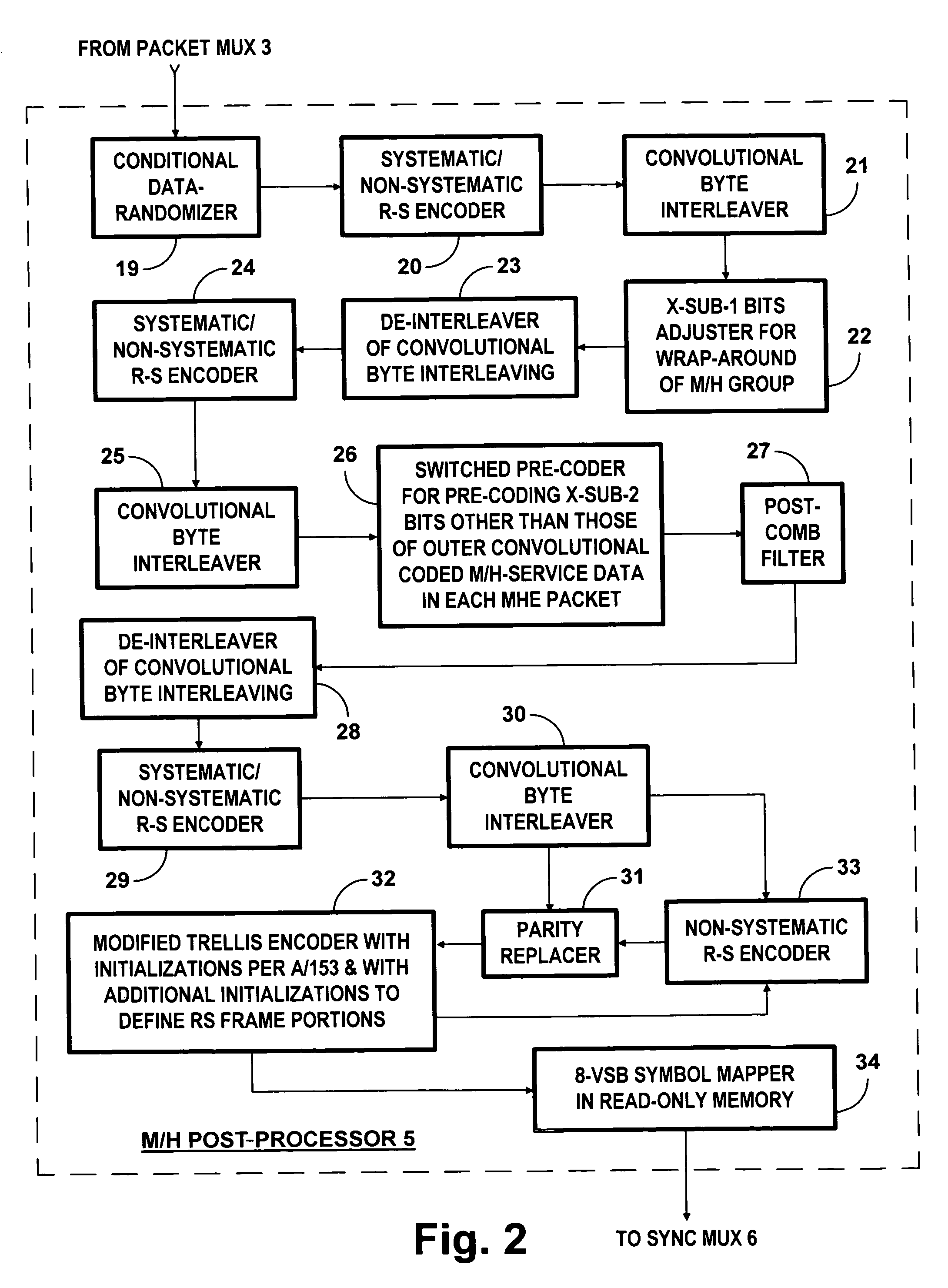Methods and apparatuses for implementing selective interference-filter pre-coding of main-service 8-VSB DTV signals
a dtv signal and filter pre-coding technology, applied in the field of digital television (dtv) signals, can solve the problems of reducing the effect of the decoding procedure, and reducing the noise performance of the receiver, so as to reduce the signal-to-noise ratio (snr)
- Summary
- Abstract
- Description
- Claims
- Application Information
AI Technical Summary
Benefits of technology
Problems solved by technology
Method used
Image
Examples
first embodiment
[0075]FIG. 3 shows in detail a second representative embodiment of the M / H post-processor 5 that is simpler in construction than the M / H post-processor 5 M / H post-processor that FIG. 2 shows, but also discontinues interference-filter pre-coding of X-sub-2 bits during the transmission of coded M / H data and provides wrap-around trellis coding of the X-sub-1 bits in each M / H Group. The FIG. 3 M / H post-processor 5 differs from the FIG. 2 M / H post-processor 5 in omitting the byte de-interleaver 23, the Reed-Solomon encoder 24 and the byte-interleaver 25. The output port of the X-sub-1 bits adjuster 22 is connected for supplying the X-sub-1 bits of its response as the LSBs of the bit-pairs applied to the input port of the switched pre-coder 26 as input signal. Although not explicitly shown in FIG. 3, provision is made for X-sub-2 bits to bypass the X-sub-1 bits adjuster 22, being delayed to compensate for the delay of the X-sub-1 bits adjustment. Although not explicitly shown in FIG. 3, p...
second embodiment
[0105]FIG. 17 depicts an encoder 452 for 105-byte-long cyclic redundancy check (CRC) coding that is used as the encoder 45 for lateral block coding in the FIG. 5 M / H Frame encoder. The two-byte checksums in the 105-byte-long CRC codewords result in P, the number P of checksum or parity bytes in 420 bytes, being eight. The 2-byte checksums exact almost 2 percent coding overhead from these 105-byte-long CRC codewords, ninety-two of which are included in each M / H Group, presuming a one-half code rate for the outer convolutional coding of the CCC. If a respective pair of CRC checksum bytes at the end of each of the 105-byte-long CRC codewords is forwarded to byte-organized framestore memory as part of the turbo decoding results, those pairs of CRC checksum bytes can automatically fill columns of bytes. However, such result is conditioned on the framestore being arranged to store a primary RS Frame that was transmitted without an accompanying secondary RS Frame.
[0106]Even shorter 70-byte...
third embodiment
[0107]FIG. 18 depicts an encoder 453 for (210, K) lateral Reed-Solomon (LRS) coding that is used as the encoder 45 for lateral block coding in the FIG. 5 M / H Frame encoder. A preferred value of K is 190 with a 9.52 percent coding overhead. The inventor's preference for (210, 190) LRS coding is based in large part on its similarity to the somewhat more shortened (207, 187) RS coding already used in DTV. The twenty parity bytes in the 210-byte-long LRS codewords result in P, the number P of checksum or parity bytes in 420 bytes, being forty. Alternatively, a slightly stronger (210, 186) LRS code with 11.43 percent overhead is similar to the (211, 187) TRS code prescribed by A / 153. The twenty-four parity bytes in these stronger 210-byte-long LRS codewords result in P, the number P of checksum or parity bytes in 420 bytes, being forty-eight. In any case (210-K), the number of parity bytes in each 210-byte-long LRS codeword is preferably even. Preferably, (210-K) is also of such value th...
PUM
 Login to View More
Login to View More Abstract
Description
Claims
Application Information
 Login to View More
Login to View More - R&D
- Intellectual Property
- Life Sciences
- Materials
- Tech Scout
- Unparalleled Data Quality
- Higher Quality Content
- 60% Fewer Hallucinations
Browse by: Latest US Patents, China's latest patents, Technical Efficacy Thesaurus, Application Domain, Technology Topic, Popular Technical Reports.
© 2025 PatSnap. All rights reserved.Legal|Privacy policy|Modern Slavery Act Transparency Statement|Sitemap|About US| Contact US: help@patsnap.com



